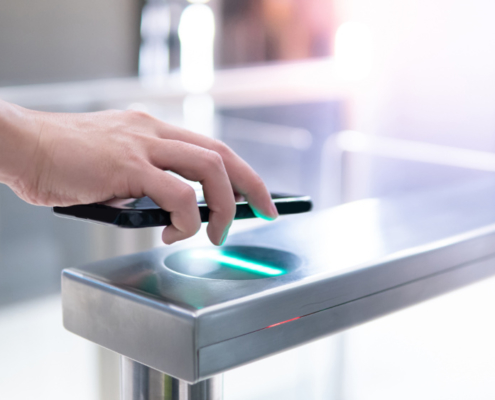What is access control?
Access control is the process of restricting or permitting access to certain resources, which can be physical or virtual. Physical resources include buildings, rooms, and equipment, while virtual resources include files, data, and applications. Access control systems are used to regulate who has access to these resources and when they have access. So, how do you grant the right level of permission to each employee? This is where the main types of access control come into play.
Main Types of Access Control
- Mandatory Access Control (MAC)
- Role-Based Access Control (RBAC)
- Rule-Based Access Control (RBAC)
- Discretionary Access Control (DAC)
Access control is important because it helps to ensure the safety of people and property, and it helps to protect information from being accessed by unauthorized individuals. Access control systems can also help to increase efficiency and productivity by allowing people to only access the resources that they need.
Mandatory Access Control
Mandatory Access Control (MAC) is a type of access control that defines strict rules for who can access what resources. MAC is often used in high security environments where it is important to limit access to sensitive data.
In a MAC system, each user is assigned a security clearance level. This clearance level determines which resources the user is allowed to access. In addition, the rules for what levels of clearance can access which resources are predetermined and cannot be changed by users.
Furthermore, a mandatory access control system helps to ensure that only authorized users can access sensitive data. By predetermining which users can access which resources, MAC can help to prevent accidental or unauthorized access to sensitive information.
Disadvantages of Mandatory Access Control
One disadvantage of MAC is that it can be inflexible. If a user needs access to a resource that they are not cleared for, they will not be able to get it regardless of whether or not they have a legitimate need for it.
Another disadvantage of MAC is that it can be time-consuming to set up and maintain. MAC systems require careful planning and ongoing maintenance in order to function properly.
Role Based Access Control
Role based access control (RBAC) is a type of security model that restricts access to resources based on the roles assigned to users. In RBAC, permissions are assigned to users through the use of roles. Roles are created that define what type of access a user has to a given resource. Users are then assigned to one or more of these roles, which gives them the permissions associated with that role.
RBAC is a flexible and scalable security model that can be used in a variety of environments. It is often used in enterprise environments where there are a large number of users and resources. RBAC can also be used in smaller environments, such as home networked computers.
There are a few different types of RBAC models, including static and dynamic. Static RBAC models are typically used in small environments where the number of users and resources is relatively small. Furthermore, In a static RBAC model, roles are manually created and assigned to users.
Dynamic RBAC models are typically used in larger environments where the number of users and resources is much larger. In a dynamic RBAC model, roles are automatically created and assigned to users based on their activity.
RBAC can be used to control access to any type of resource, including files, applications, databases, and even physical devices. It is a versatile security model that can be customized to fit the needs of any organization.
Discretionary Access Control
Discretionary access control (DAC) is a type of security model that gives users certain permissions to access resources. In a DAC system, each user has a unique identifier (UID) and is associated with a set of permissions that dictate what they are allowed to do with the resources they have access to.
DAC is often contrasted with mandatory access control (MAC), which is a security model that dictates what users are allowed to do based on predefined security labels. MAC systems are more restrictive than DAC systems, as they do not allow users the same degree of flexibility in terms of permissions.
DAC systems are typically used in environments where it is important to give users some degree of control over their own data and resources. For example, in a corporate environment, it may be important to allow employees to have some control over who can access their files and data. DAC systems can also be used in home environments, where users may want to set different permissions for different family members or housemates.
Discretionary access control is a type of security model that gives users certain permissions to access resources. In a DAC system, each user has a unique identifier (UID) and is associated with a set of permissions that dictate what they are allowed to do with the resources they have access to.
Rule Based Access Control
Rule-based access control (RBAC) is a model of access control in which permissions are assigned to users based on the rules that define relationships between users and resources. RBAC is a flexible and scalable model that can be used to control access in large organizations with many different levels of hierarchy and complex business rules.
In a RBAC system, permissions are assigned to users through rules that define relationships between users and resources. For example, a rule may state that all members of the accounting department have read-only access to financial records. This rule would be enforced by the system, ensuring that only users in the accounting department can view financial records.
RBAC systems can be used to control access to any type of resource, including files, databases, applications, and even physical resources such as buildings and equipment. RBAC is a flexible and scalable model that can be adapted to the needs of any organization.
Types Of Access Control Door Readers
There are many different types of door access readers available on the market today. The most popular type of reader is the proximity reader, which uses radio frequency identification (RFID) technology to identify a person or object. Other types of readers include magnetic stripe readers, barcode readers, and fingerprint scanners.
RFID door readers: RFID door readers are used to identify a person or object via radio frequency identification (RFID) technology. RFID tags are often placed on key cards, ID badges, or other items that need to be scanned.
Keypad reader: A keypad door access control reader is a type of reader that uses a keypad to input a PIN or password.
Fingerprint scanner: A fingerprint scanner door access control reader is a type of reader that uses fingerprint recognition technology to identify a person.
Barcode Reader: A barcode door access control reader is a type of reader that uses a barcode to input information.
Smart lock door reader: A smart lock door reader is a type of reader that uses Bluetooth or NFC technology to connect to a smartphone or other device.
Biometric Door Reader: A biometric door reader is a type of reader that uses physical characteristics, such as a fingerprint, to identify a person.
Can Technology Keep Your Business Safe and Secure?
When it comes to strengthening the security which protects your business, you have a wide range of options to choose from. Furthermore, many of these security systems can be combined to enhance your safety. Read more about security cabling technology
For further advice or to arrange a free survey please contact our project team below.
Alternatively call us on 0203 912 6200





